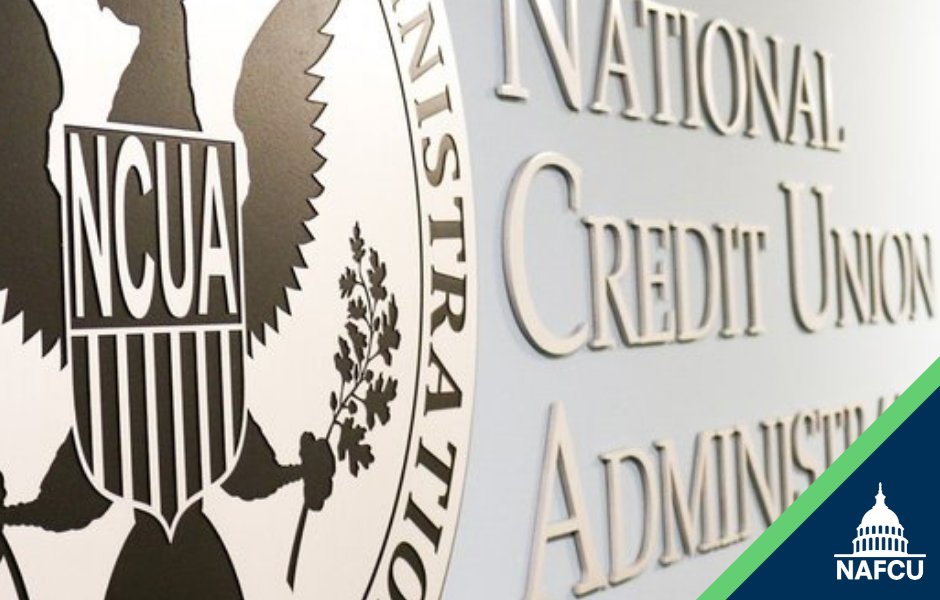Newsroom
NCUA hosts webinar on interest rate risk supervisory framework updates
 The NCUA on Thursday held a webinar to discuss and share more information with credit unions on its recent updates to the interest rate risk (IRR) supervisory framework. The virtual event was attended by more than 1,000 credit union officials, reaffirming the industry’s high level of interest in the topic.
The NCUA on Thursday held a webinar to discuss and share more information with credit unions on its recent updates to the interest rate risk (IRR) supervisory framework. The virtual event was attended by more than 1,000 credit union officials, reaffirming the industry’s high level of interest in the topic.
During his opening remarks, NCUA Chairman Todd Harper stated his concern with the rapid acceleration in interest rates and its impact on credit unions. Harper mentioned that the agency will provide separate training, guidance, and support for examiners to help ensure the updates are properly implemented.
Updates to the IRR were announced in a Letter to Credit Unions earlier this month as a part of the agency’s approach to create a more flexible framework, one that would improve the NCUA’s “supervision of IRR in credit unions given current market conditions.”
According to the announcement, part of these changes apply to the NCUA’s NEV Supervisory Test (NEV Test), which measures a credit union's IRR exposure relative to its capital. In 2020 and 2021, many credit unions experienced significant share growth, which continues to depress net worth ratios, followed by a rapid rise in benchmark interest rates in 2022, leading to poorer NEV Test results compared to prior years.
As discussed in both the announcement and the webinar, the primary changes to the framework include:
- revising the NEV’s Test risk classifications by eliminating the extreme risk classification and modifying the high risk classification;
- clarifying when a Document of Resolution (DOR) is warranted, including removing any presumed need for a DOR based on an IRR supervisory risk classification, and the related need for a credit union to develop a de-risking plan;
- providing examiners more flexibility in assigning IRR supervisory risk ratings; and
- revising examination procedures to incorporate updated review steps when assessing a credit union’s management of IRR in a changing economic and interest rate environment.
NCUA staff, during the webinar, also stated it is evaluating DORs issued to credit unions in 2022 based on findings of extreme IRR, to determine whether a DOR would be warranted under the new guidance.
Credit unions can review the NCUA’s presentation and explore the IRR workbook here.
NAFCU met with the NCUA in July to discuss credit unions' IRR challenges and how the NCUA can help credit unions better manage IRR in a rising rate environment. The association will continue to monitor and advocate for additional resources and tools to help credit unions manage IRR.
Share This
Related Resources
Add to Calendar 2024-06-26 14:00:00 2024-06-26 14:00:00 Gallagher Executive Compensation and Benefits Survey About the Webinar The webinar will share trends in executive pay increases, annual bonuses, and nonqualified benefit plans. Learn how to use the data charts as well as make this data actionable in order to improve your retention strategy. You’ll hear directly from the survey project manager on how to maximize the data points to gain a competitive edge in the market. Key findings on: Total compensation by asset size Nonqualified benefit plans Bonus targets and metrics Prerequisites Demographics Board expenses Watch On-Demand Web NAFCU digital@nafcu.org America/New_York public
Gallagher Executive Compensation and Benefits Survey
preferred partner
Gallagher
Webinar
Add to Calendar 2024-06-21 09:00:00 2024-06-21 09:00:00 2024 Mid-Year Fraud Review Listen On: Key Takeaways: [01:16] Check fraud continues to be rampant across the country. Card fraud is affecting everyone. [04:31] Counterfeit US passport cards are just another new toolbox in the bad actors’ toolbox. [07:21] Blocking the fallback is the only way to defeat counterfeit cards. [11:17] The best way is constant education to your members in as many channels as you can. [13:02] We are still seeing overdraft lawsuits. Make sure the programming you have at your credit union matches what you have displayed for the members. Web NAFCU digital@nafcu.org America/New_York public
2024 Mid-Year Fraud Review
Strategy & Growth, Consumer Lending
preferred partner
Allied Solutions
Podcast
Add to Calendar 2024-06-21 09:00:00 2024-06-21 09:00:00 The Evolving Role of the CISO in Credit Unions Listen On: Key Takeaways: [01:30] Being able to properly implement risk management decisions, especially in the cyber age we live in, is incredibly important so CISOs have a lot of challenges here. [02:27] Having a leader who can really communicate cyber risks and understand how ready that institution is to deal with cyber events is incredibly important. [05:36] We need to be talking about risk openly. We need to be documenting and really understanding what remediating risk looks like and how you do that strategically. [16:38] Governance, risk, compliance, and adherence to regulatory controls are all being looked at much more closely. You are also seeing other technology that is coming into the fold directly responsible for helping CISOs navigate those waters. [18:28] The reaction from the governing bodies is directly related to the needs of the position. They’re trying to help make sure that we are positioned in a way that gets us the most possibility of success, maturing our postures and protecting the institutions. Web NAFCU digital@nafcu.org America/New_York public
The Evolving Role of the CISO in Credit Unions
preferred partner
DefenseStorm
Podcast
Get daily updates.
Subscribe to NAFCU today.
